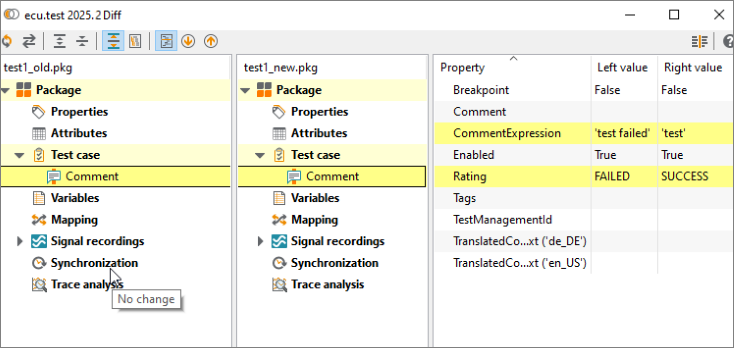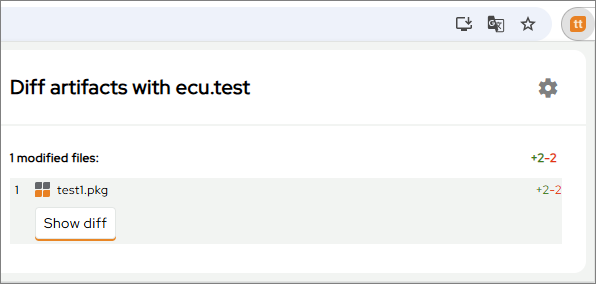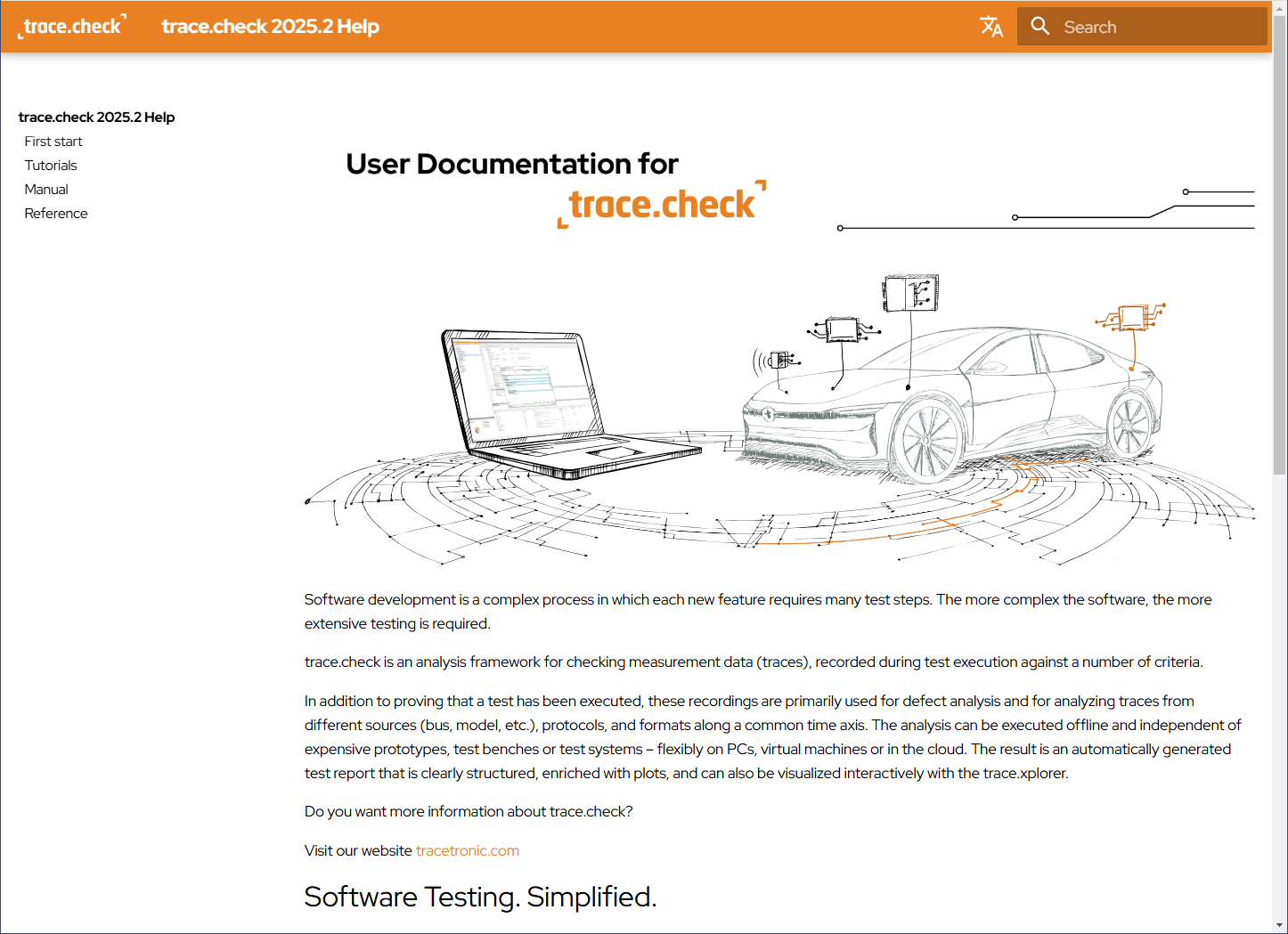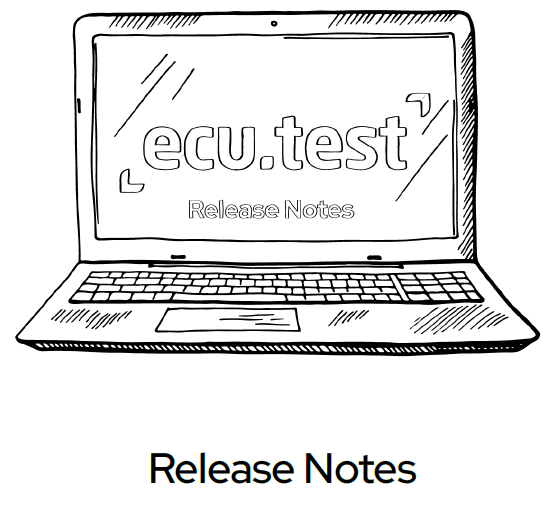TCF files can now be managed centrally and are displayed in the Workspace Explorer within the configuration directory. These files can be opened and edited by double-clicking them in the editor or by drag-and-dropping them into the configuration window.
To better distinguish between local and library configuration files, the icons have also been adapted according to the usual scheme and are now displayed in orange and teal, respectively.
trace.check Release 2025.2
Highlights at a glance
Online version of the trace.check user documentation
trace.check user documentation is now also available online. Starting with version 2025.2, all help components from the last four releases will be available. In the future, online help will also be linked directly to trace.check so that the latest version is always used. You can now also take a quick look at the help without having to install it first.
In addition, the file structure of the offline help has been modernized. Among other things, file names have been standardized (now English only) and minor structural adjustments have been made.
Please note: Links within the help have changed as a result.
Take a look at the trace.check user documentation
In addition, the file structure of the offline help has been modernized. Among other things, file names have been standardized (now English only) and minor structural adjustments have been made.
Please note: Links within the help have changed as a result.
Browser extension for opening diffs in the ecu.test/trace.check diff viewer
A new browser extension called Open with ecu.test diff is now available for Chrome, Edge, and Firefox.
As usual, it allows you to compare changes to packages and other artifacts from GitHub and GitLab directly with an installed ecu.test.
Note: Starting with this version, you can open the comparison without a license.

As usual, it allows you to compare changes to packages and other artifacts from GitHub and GitLab directly with an installed ecu.test.
Note: Starting with this version, you can open the comparison without a license.

You can add the extension via your browser
(Chrome+Edge, Firefox).
However, browser extensions are often managed by IT and require explicit approval. For easier verification, the extension's source code is open source on (GitHub).

(Chrome+Edge, Firefox).
However, browser extensions are often managed by IT and require explicit approval. For easier verification, the extension's source code is open source on (GitHub).




